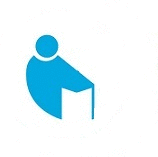
steroid injection
Corticosteroid medications are powerful drugs that can be useful in decreasing pain and inflammation in various musculoskeletal conditions. Depending on your health and the severity of your symptoms, the effects of a corticosteroid injection can vary quite a bit. If the injection decreases or eliminates your pain, you may be able to get another injection if your symptoms return. Because of the possibility of serious side effects, though, the number of injections — and how often you can receive them — is limited.
Types of injections?
Cortisone falls into a group of chemicals called steroids. It is very different from anabolic steroids commonly abused by weight lifters or competitive athletes. The cortisone/steroid injections, used in medical practice, fall into three broad categories, articular injections, “trigger point” injections, and epidural steroid injections.
- Articular or joint injections are preceded by an aspiration withdrawing joint fluid or blood. Joints commonly injected are the shoulder, knee, ankle and small joints of the hand and foot. Most of the injections can be followed by a booster injection 2 to 4 weeks later. A good limit is three injections over a three-month period of time (an injection to another location can be done at any time)
- The “trigger point” injection is done to a tendon area or into the bursa surrounding such joints as the shoulder, knee, or the hip. These follow the same guidelines as articular injections as far as frequency.
- An epidural steroid injection is another category. It is neither a joint nor “trigger point” injection but, rather an injection inside the bony column of the spine surrounding the dura (the sac that encloses the spinal cord and spinal nerves). Lumbar epidural injections are a relatively simple technique. They are done several inches from the spinal cord and are unlikely to be accompanied by complications except, perhaps a headache. Cervical (neck) epidural injections are a very specialized technique done in our office only by skilled and experiences. Epidural steroid injections are useful for a variety of back conditions including sciatica, arthritis, degenerative disc problems, and spinal stenosis.
Is the injection painful?
Some cortisone injections can be painful. Injections into an area that is already inflamed are more sensitive. Some areas, such as the hand and foot are particularly sensitive and a freeze block is used before injection. Other areas, such as the knee and shoulder are only moderately uncomfortable.
Cortisone shots are generally accompanied by an anesthetic such as Carbocaine or Lidocaine. This deadens the area and indicates where the shot should be placed (the pain will go away about an hour while the anesthetic works). Most people who have reactions or allergies to cortisone really have the reaction to the anesthetic agent of the epinephrine (adrenaline), which may be in some forms of the injection. Epinephrine can cause tachycardia (rapid heart beat) in some patients. For others, the sight of a needle will cause this reaction and the feeling of being faint is often misinterpreted as an allergic reaction
